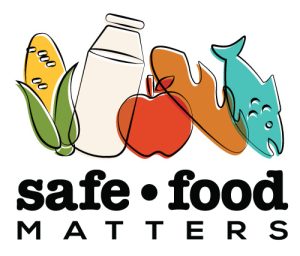
The Pest Management Regulatory Agency (PMRA) is consulting with the public on the Pest Control Products Act (PCPA). In Summer, 2021, there was public outcry to proposed increases to “maximum residue limits” of pesticides in food, and this consultation is the result. The deadline is June 30, 2022.
Discussion Document 2022-01 sets out 3 objectives, and asks for answers to questions on each. The list is in Annex 3.
Here are our thoughts on the first objective, “Modernized Business Processes” and related questions.
NOTE: This consultation is on a “Targeted Review” of the PCPA, but PMRA says it will also take comments on the full Act, since the full PCPA currently stands referred to Parliament for a broader legislative review. A main point here is the focus of reviews should be on the ENTIRE pest control product (PCP) including all ingredients, not just the “active” ingredient, because we are exposed to the entire product (not just the one ingredient) in the “real world”.
Please send your comments on the consultation:
By email to PMRA Publications: pmra.publications-arla@hc-sc.gc.ca
Identify Discussion Document 2022-01
Provide: your full name and organization; phone number; mailing or emailing address.
Consider: cc’ing us at SafeFoodMatters@gmail.com
OR: Use the Consultation Comment Form
Standard for Comments: The main objective of the PCPA is to protect human health and the environment from the risks of pesticides (sec 4). Secondary objectives are: support sustainable development; develop innovative, sustainable pest management strategies through lower risk pesticides and other measures; only approve PCPs that are of value.
If a “Targeted Review” proposal aligns with these objectives, it is good. If it doesn’t, it is out of scope.
Objective 1 – Further strengthening human health and the environment through modernized business processes governing pesticide reviews
Question: Are there any changes you would like to see in how MRLs are established?
Response: YES. MRLs should be considered a registration decision, require a full exposure assessment that is particular to Canada, and not be allowed unless there is no alternative strategy and the PCP has value.
Maximum Residue Limits establish the quantities of pesticides that are applied on crops. This application on crops has an exposure effect on the quantities of pesticides in foods, on the environment, on occupational applicators and on other bystanders. (The idea that pesticide applications can be contained by a buffer zone no longer holds true).
Because of these effects, a full exposure risk assessment is required for the establishment of MRLs. If an MRL has not been set by Canada for Canadians (eg. an “import” MRL), then the default, lower, protective MRL permitted by Canadian law should be applied.
Because the levels in pesticides in food require a full exposure risk assessment, any establishment or any increases in the levels should be considered as a pesticide registration/authorization decision, and should occur only when necessary.
Changes to MRLs should not be reopened except as a new registration/authorization decision, unless the reopening concerns a lowering of the limits. Increases by their very nature increase exposure and do not align with the purpose of the PCPA. Decreases requires less stringent standards because they align with the protection purpose of the PCPA.
Increases must be shown to be necessary, in that there are no alternative pest control products available and there are no innovative sustainable pest management strategies that could be employed to manage the pest (secondary objective).
They must also be shown to promote the sustainable development objective and not compromise the future. If the rationale for an increase is that more quantities are required to manage pests, the question should be asked whether the pests are becoming resistant to the pesticide. If there is pesticide resistance, then increasing quantities is not a sustainable approach so does not align with the sustainability objective. Further, a pesticide that is not effective without increased quantities also cannot be considered effective, meaning it does not meet the objective of having acceptable value.
In addition, the risk assessment must be particular to Canadians in order to be sure that Canadians are protected. The Canadian risk assessment process employs variables that are unique to Canada. The “made-in-Canada” variables include our Acceptable Daily Intake and Acute Reference Dose, the 10 fold “safety” factor for children and infants, consideration of particular subpopulations, and the food consumption patterns of Canadians. These cannot be generalized with variables from other jurisdictions.
Also the foods grown in Canada are produced in a growing climate that is particular to Canada. The field trials used for setting MRLs should be reflective of Canadian growing conditions and resulting pesticide application scenarios and requirements. Crops are developed for success in the more cold and/or wet climatic regions of Canada and assessment of pesticides on foods grown in Canada and eaten by Canadians needs to bear this in mind.
Question: What barriers, if any, exist in the Pest Control Products Act to implementing continuous oversight?
Response: the lack of legal consequences for delays, a definition of PCP that catches non “products”
Continuous Oversight. “Modernized business processes” must be effective at improving the protection of Canadians and the environment. As such, they are good if they improve the validity of the assessments and evaluations of pesticides. They are out of scope if they are just allowing pesticides to get on the market more quickly.
Continuous oversight is a good idea, provided it actually allows PMRA to have a more “hands on” approach and oversight of PCPs. lt must not detract from the 15 year point in time oversight, but instead support it.
Timely decision making requires timely access to data, and data must be provided on a continuous, adequate basis in order for this approach to work. The time frames for making decisions must be pre-set, clear and unwavering, and no delays should be permitted.
The onus for proving acceptable risk is, at all times, on the registrant – the party wanting a pesticide decision. The barrier in the PCPA for implementing continuous oversight is it does not contain an incentive for providing data when required.
A recommendation is that if the registrant does not provide the data when required, then the appropriate assessment cannot be made. Suggested repercussions are:
- When applying for registration, then the entire registration for all uses should be delayed until the data is provided (no partial registrations)
- In a re-evaluation, the registration should be amended to remove the aspect of the registration to which the data relates (and if the data relates to the entire registration, the entire registration should be revoked);
- In the context of a new use, the new use should be delayed until the data is provided and assessed.
Review Process Efficiency. Optimization of information management is an excellent idea. A recommendation is that these process efficiencies be expanded to allow PMRA to conduct systematic literature reviews. This would allow assessors with direct access to scientific literature instead of having to rely on third parties and registrants for the current scientific literature.
Risk-based Management. The premise of this strategy is to make a judgement on whether a pesticide is high or low risk, for the goal of decision which ones to assess for risk. This contains a reasoning fallacy, and runs counter to the premise of the PCPA that pesticide products need to be assessed for risk.
In addition, the concept of the registration of “lower risk” pesticides does not make sense, because only pesticides that pose “acceptable” risks are allowed to be registered under the PCPA. A pesticide with low risk still presents a risk, such that there cannot be a “reasonable certainty of no harm” associated with it.
Because the concern of the PMRA appears to be process efficiency, and making a front-end judgement on what should be “from the get-go” allowed to be used on pests to manage them without requiring assessment, then one way to consider this issue is to be more clear in the definition or meaning of a “pest control product”.
A “pest control product” could be redefined as an item that is designed and manufactured to kill pests, whether on an acute, chronic or other basis. This aligns with the idea that a “product” is “produced”, as opposed to an item or thing found in nature or used as a food or food ingredient.
This wording aligns with the economic model that sees a registrant putting money and time into developing a product and the regulatory model that sees this registrant needing to prove acceptable risk with the end goal of receiving money for its product. The concept of “risk” does not generally need to be established with items found in nature or with food, and these items are not produced with the end goal in mind of making money from them as product to kill pests.
This also aligns with the second, ancillary objective of the PCPA of promoting innovative, sustainable pest management strategies and facilitating access to lower risk items (provided the wording is appropriately revised).
(It is also recommended that the definition of pest control product be revised to remove the possibility that it be considered the “active ingredient” only. The entire product, including other ingredients, needs to be assessed, for the reason that these ingredients can be more toxic and/or render the active ingredient more toxic than the active ingredient considered on its own).
Conclusion: The establishment of MRLs pose exposure risks and require rigorous and appropriate assessment. Continuous oversight requires empowering PMRA to enforce timeliness.
1 Comment
Write a comment
You must be logged in to post a comment.


The total disregard for human health by food producers using GMOs, glyphosate and similar “pest control” processes is very disturbing. The government has a duty to protect it’s citizens from known poisons, which have been well documented by independent scientists, which are so liberally used by the food and forest industries.
More than just a human health nightmare, these poisons are affecting the entire soil micro-biome, including run-off into rivers and lakes, as well as all insects, birds, and wildlife.
STOP THE MADNESS and regulate the use of these products (Bayer and Monsanto) in this country, our future truly does depend on it.